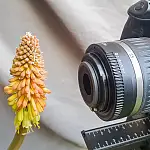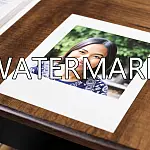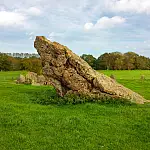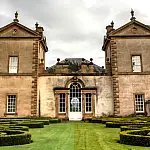How To Photograph Ancient Sites, Castles, Ruins and MonumentsPhotograph ancient sites using my to the challenges and pitfalls as well as how to get the best photos of ancient sites and historic places.
In Britain, we're blessed with an excellent selection of castles, monuments, ruins and ancient burial locations to photograph. The ancient monuments, medieval fortresses, ruined castles and hill forts that are scattered throughout the length of Britain have been a source of interest to photographers for as long as photography itself.
You may think that photographing such sites is some of the easiest forms of photography around, after all, you don't need to worry about timing your shot with birds in flight, or the meticulous detail of macro photography. There are however challenges specific to photographing ancient sites which I will describe and show you how to resolve them.
Research the Ancient Site Location
There are so many resources available online nowadays it's easy to put together an impression of a site through photographs, maps and user-generated feedback. You can also use tools such as Google Earth to get an overview of the site, and 3D mode allows you to visualise the terrain. These are a great way of having an outline of locations that you think are worth a visit. It is still necessary to do extra research once you are on the ground at the site. For this, you will need a fairly large-scale map (1:25000 is ideal) and a compass, as not all monuments are conveniently signposted.
Timing for the Best Ancient Site Mood
Another essential point to consider is the best time of year to visit an ancient site, to take advantage of the surrounding countryside. If you are out at the moors, late summer is the perfect time to catch some purple heather or, if the site is wooded, autumn may provide a perfect opportunity for rich colours. Some locations, such as those sites on or very near the coast have a tendency not to vary that a lot with the seasons, making them ideal all year round. Save these locations for winter and early spring when there's little other colour around.
Access to the Ancient Site
Before heading out, check what access to a location is like. Many ancient sites are in the care of English Heritage or National Trust. They may charge a fee for entry to the grounds or restrict access to certain times of the day or year. If you are using professional-looking photography gear, they may also prevent you from entering or from taking photos without prior permission. For this reason, it's advisable to contact the site owner ahead of your visit.

Find the Best Angle to Photograph Ancient Sites
To find the best point of view you need to stroll around and explore the site, viewing it from different angles and seeing how it fits into the landscape around it. Sometimes, the best view can also be had from a nearby hill, or maybe there are some interesting foreground elements you can incorporate. Take note of whether or not there are any interesting alignments with close-by geographical features, as ancient monuments were often constructed to be in alignment with other ancient sites, sacred hills or peculiar rock formations.
The angle of view is critical, and this particularly applies to buildings, where it is crucial to show the three-dimensional aspect. Rather than shoot head-on where a solid building seems like a cardboard cut-out, move around the subject, and find a corner to work with. This may show two sides of the structure and give it depth.
It's very tempting to angle the camera upwards or downwards to compose a picture however this will create distortions in perspective. These pincushion distortions are most noticeable on tall structures when using wider-angle lenses. You will notice the pincushion distortion because the walls of the building seem to converge, or slope inwards.

One way to fight pincushion distortion is to move further away from the subject and use a longer focal length. When you're further away the distortion problem is less pronounced.
Using a wide-angle lens on the other hand will allow you to castle or other buildings in context, this will enable you to get more into your composition and capture how the building fits in with the landscape.
Photograph Ancient Sites with Great Lighting
Once you have determined the composition, it's time to figure out the best lighting. If the subject is to be side lit, then you need to determine when this will likely occur and if it coincides with first light or sundown. If you are trying to photograph a ruin or standing stones with backlighting, the perfect time to do this is when the sun is lower in the sky, as this will help regulate contrast. Strikingly shaped buildings and tall standing stones make superb silhouettes, however, be very careful to not let the horizon cut midway through the subject as this will make the outline unclear. The camera position can be used to isolate the subject against the sky, making the profile more obvious. The relative position of sunrise and sunset varies through the year, so some places are not lit in the early morning and late afternoon as a result of shadows falling from nearby hills.
.webp)
Do your research on the site. If your target is a burial chamber which is aligned with the rising Sun, you may want to consider visiting at sunrise to shoot a "sun star" shot. This is where the photograph shows rays emanating from the sun. You can do this using a large aperture together with a slow shutter speed.
Creating Mood at Ancient Sites with Weather and Lighting
Lighting and weather help generate a mood for the photograph. Even though you don't have any control over either, it's worth thinking about what kind of atmosphere you want to create. To put across the peaceful character of sacred sites, it can be good to use the first or last rays of sunlight, where the subject is barely lit, and the colours are subtle (the golden hours). Some historic sites lend themselves to a more dramatic atmosphere and work well with colourful skies at dawn and dusk. For the best effects, there needs to be some well-placed cloud for the light to reflect off.

When photographing the interior of stately homes or castles, it is better to use diffuse light. This will cause fewer contrast problems and harsh shadows. Some ruins and monuments can look better in black and white, as it adds to the air of antiquity and quiet decay. Colour can occasionally be a distraction if there are too many contrasting colours. Using monochrome on overcast days can act to soften colours and flat tones can appear lifted.

Tips for Photographing Stone Circles
With stone circles, it can be really hard to find a place where the numerous stones appear separate from one another, as they tend to overlap, or they are too far apart. You usually have to find a compromise, as it is not always possible to maintain these spaces. A slightly elevated view may help with this, but often isn't the ideal angle to photograph from. The lower the structure the harder it is to bring it out of the surroundings, whereas tall stones make much more of an impression. This is why some stone circles photograph nicely and others tend to be somewhat underwhelming. The same is true of burial barrows, as these are regularly very discreet mounds which are easy to overlook. Good research about the site should help to avoid disappointment when you arrive.












